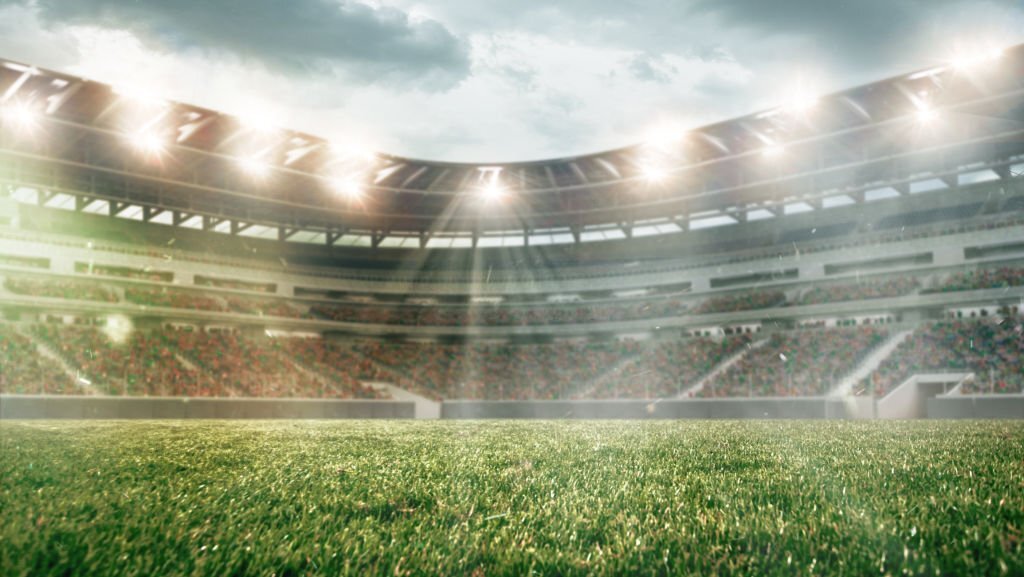Most Important Criteria for the Construction of a Multifunctional All-Weather Pitch
You can find them in schools and universities, in clubs, in leisure facilities and public places: artificial grass flooring with colored lines, two goals, basketball hoops and a high ball fence with wire mesh – outdoor all-weather pitches. Their shock-absorbing tartan floor coverings have very good ball bounce behavior, protect the athletes from injuries, are non-slip and, as a water-permeable variant, dry quickly after a downpour. Depending on the size and equipment, the all-weather pitches can be used for several sports such as football, tennis, volleyball, hockey, handball and basketball as well as high and long jump or gymnastics courses. We as Reform Sports have summarized the most important criteria for the construction of a multifunctional all-weather pitch in a 5-point checklist for you.
TIP 1: Before Building the Tartan Court Determine the Concept of Use
For which sports should the all-weather or artificial pitch be suitable? Who uses it? Will the outdoor sports field be open to the public later and do I therefore have to protect it from vandalism? How often is it maintained and by whom? All these and other questions should be clarified in advance in order to select the optimal floor covering and the right equipment. Because not every synthetic floor is suitable for every type of sport and every intensity of use. Experts will help you to answer these questions, to comply with legal regulations and to determine the sports field construction costs. These include, for example, sports facility construction planners or landscape architects specializing in sports field construction. They also know the size of such a sports field including the markings.
TIP 2: Good To Know Standard Sizes and Ruling
There are three standard sizes for all-weather pitches, The playing field dimensions of 20 x 28 m is the smallest variant, suitable for two volleyball courts (each 18 x 9 m, blue lines) or a basketball court (26 x 14 m, yellow lines). With an average size of 28 x 44 m, three volleyball courts (each 18 x 9 m, blue lines), two basketball courts (each 26 x 14 m, yellow lines) or a large handball field (40 x 20 m , orange line) to this standard size of an all-weather pitch.
28 x 44 m includes a large all-weather field, on which tennis can be played in addition to handball, basketball and volleyball (23.77 x 10.97 m, white lines) or with which a 40 x 26 multi-purpose playing field is available. When it comes to the dimensions of the basketball courts, it should be noted that this is a school sports field. In addition, the basketball stand is assumed to have a projection of 2.25 m.
TIP 3: The Optimal Sub-base for Rainwater Drainage
Under the synthetic grass surface is usually the bound base course – an asphalt base course made of aggregate, filler and bitumen. It is 65 to 100 mm thick and has one or two layers. Underneath is a base course without binder. This has a height of 200 mm, is also one or two layers and consists of natural aggregates. The last layer is a stable, level subsoil. This substructure with drainage absorbs the seepage water and, in combination with a drainage device, leads it to the seepage shaft to the receiving water. Depending on whether the construction is to be water-permeable or water-impermeable, the asphalt base course with binder and the base course without binder must also be made in the same way.
TIP 4: Waterproof or Water permeable?
In general, it can be said that water-permeable sports floors are the right choice when building sports facilities for mass or school sports and for multifunctional playing fields. Waterproof synthetic surfaces are mainly used in professional sports and in international competitions for tartan tracks. The synthetic coverings are categorized according to DIN 18035-6 into covering types A to E. The covering types A, B and C are water-permeable, D and E water-impermeable.
TIP 5: The Ideal Sports Court Care for a Long Lifespan of the Sports Flooring
For the longest possible durability, all-weather pitches and artificial grass tracks require regular and professional sports pitch maintenance. In the area of the synthetic surface, this consists of four maintenance levels:
- Intensive cleaning with special cleaning machines
- Early repair or refurbishment.
With good care, the lifespan of a properly installed synthetic grass floor covering with a spray coating is around eight years; Full PU/sandwich plastic coverings achieve a service life of up to 30 years in the system structure. As a full-service provider for the construction of sports facilities and as an RAL-certified care company, we as Reform Sports have trained service teams and special machines that enable efficient cleaning, care and repair of tartan surfaces.
Summary of the Construction of the Outdoor Sports Court
All-weather courts with a synthetic surface are the ideal solution for mass and school outdoor sports, as they are suitable for many types of sport. The surfaces are weatherproof and rot-resistant and retain their anti-slip effect even when wet. Since the water-permeable surface types dry out quickly, weather-related breaks in playing in summer are only short-lived. In principle, sports fields with a tartan surface can be used in any weather – apart from ice and snow. Their flawless usability also depends on optimal sports field maintenance – this can be actively supported by manufacturers such as Reform Sports with various maintenance using manual.

